- Administrator
- Albums and Singles

Read More
- Administrator
- Albums and Singles
When I was a child, I spoke to Helen.
Helen is a pop group from Oregon. Liz Harris (vocals/lead guitar), Jed Bindeman (drums/tambourine), Scott Simmons (bass/guitar), and Helen (back up vocals). Originally started with the intention of being a thrash band, it turned into something else entirely. The Original Faces was recorded over a period of several years in Portland by the band members, their friends Nick, Chris and, largely, Justin Higgins. Written together, some songs based on Liz and Scott's demos.
The song "Violet" can be heard here.
More information can be found here.

Read More
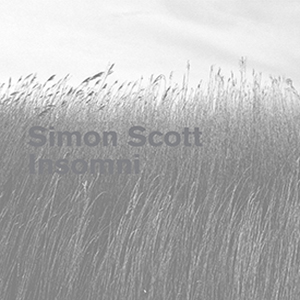
Although probably doomed to be primarily known forever as "the drummer from Slowdive," Simon Scott has had quite an impressive, varied, and somewhat inscrutable solo career, releasing some fine albums on labels like Miasmah and 12k and dipping his toes into a whole host of underground subgenres.  With his latest release, he continues to alternately dazzle and perplex me–even more so than usual, actually.  Curiously (and misguidedly?) presented as a single 42-minute track, Insomni feels more like multi-artist mixtape than a coherent longform composition.  Naturally, some of the passages are quite beautiful, but the overall presentation left me scratching my head quite a bit.
- Administrator
- Albums and Singles

Although probably doomed to be primarily known forever as "the drummer from Slowdive," Simon Scott has had quite an impressive, varied, and somewhat inscrutable solo career, releasing some fine albums on labels like Miasmah and 12k and dipping his toes into a whole host of underground subgenres.  With his latest release, he continues to alternately dazzle and perplex me–even more so than usual, actually.  Curiously (and misguidedly?) presented as a single 42-minute track, Insomni feels more like multi-artist mixtape than a coherent longform composition.  Naturally, some of the passages are quite beautiful, but the overall presentation left me scratching my head quite a bit.
Despite the many mystifying sequencing and stylistic quirks that ultimately derail it, Insomni at least begins in very strong fashion, as the opening "An Angel From The Sea Kissed Me" gradually blossoms from gentle, looping drone into sizzling, fuzzed-out rapture that would not sound at all out of place on one of Tim Hecker's better albums.  Then the brief piece that follows ("Holme Posts") provides a pleasant interlude of lazily strummed acoustic amidst some nature sounds before making way for yet another gentle drone piece ("Confusion in Her Eyes").  Well, gentle at first anyway, as it gradually snowballs into an impressive earthquake of roiling and rumbling catharsis.  Then it is time for yet another fleeting interlude in the welcome form of a warm swell of fuzzy shoegaze guitar noise ("Relapse").  So far, so good!  Unfortunately, as much as I enjoy "Relapse," it marks the turning point where I started wondering what Simon was thinking, as it appears and disappears in the span of roughly a minute.  It does not make sense to toss aside a promising motif so quickly and casually.
Nor does it make sense to linger on less promising ideas, as Scott does with "Oaks Grow Strong," a pastoral acoustic guitar loop that gradually transforms into a menacing, spacey throb.  I kind of enjoyed the menacing bit, mind you, but it was still over far too quickly and did not seem bear much relation to the much longer and less interesting opening theme.  Then, after quickly presenting and discarding yet another promising motif (the crackling radio transmissions of "Ternal"), Insomni bewildered me yet again with the melancholy steel-string guitar reverie of "Nettle Bed."  Like all of Insomni's flaws, it is not necessarily a weak piece–it just does not make much contextual sense.  Also, it proved to be the harbinger of a radical change in the album’s course: following the beautifully quivering and throbbing (and far too short) "Fen Drove," Scott essentially transforms Insomni into a James Blackshaw album.  Sort of, anyway.  The last three pieces are all acoustic guitar-based.
The first, "Nember," is a gently strummed minor key chord progression embellished with some subtle production flourishes and beautifully played arpeggios, but is otherwise dragged down by its goth-lite mood.  The lengthier "Far From the Tree" is a vastly superior 12-string arpeggio work-out, evoking a very pleasant strain of melancholy, but sounds much more like Blackshaw (a past collaborator) than it does Simon Scott.  The closing "Swanbark" offers still more of the same.  Again, it is not bad (rather enjoyable, actually).  Also, James Blackshaw does not have a monopoly on playing intricate acoustic guitar passages.  However, it is definitely both puzzling and disorienting to see an artist of Scott’s caliber behaving so in such chameleonic fashion.  I would much rather experience a distinctive and coherent vision than a kaleidoscopic showcase of everything that Scott can do well.
Actually, a kaleidoscopic showcase could probably be great too, but it would need to be sequenced and assembled a lot more effectively than Insomni’s current incarnation.  I truly cannot fathom why this album is presented as a single track, as each piece is isolated by brief periods of silence, which precludes any sort of seamless flow or artful segue between pieces.  There also does not seem to be any sort of coherent overall arc that threads everything together.  This definitely feels like a career-spanning "incidental music" collection rather than a single long-form work.  Also, the "single track" format makes it annoying to enjoy the handful of songs that I genuinely like.  For example, if "Fen Drove" were a separate song, I would listen to it regularly.  I am considerably less likely to listen to it when I need to know that it starts at the 25:40 mark and ends at 27:53.  I could also go on and on about the bizarre pacing, but I will not.  It just all adds up to a needlessly exasperating listen. I almost wonder if Scott deliberately created this album as a prank to drive me nuts.  If so, it very nearly worked.  I sincerely hope this type of sequencing does not become a trend.  While there is definitely a lot of fine material to be found here, my enjoyment was largely (and hopelessly) torpedoed by the presentation. More patient and indulgent fans than me will probably be able to enjoy Insomni a lot more than I did, but I do not see myself revisiting this album again anytime soon unless I find the time and motivation to liberate the better pieces from their surroundings.
 
 
Read More
- Administrator
- Albums and Singles
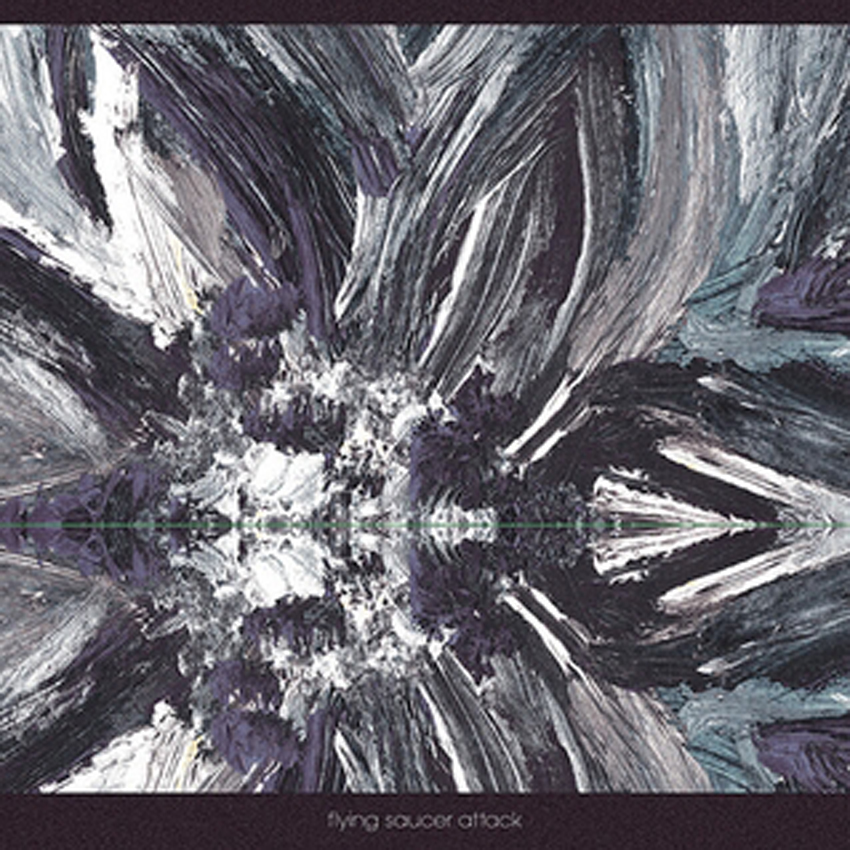
After roughly a fifteen year hiatus, cult shoegaze/basement psychedelia visionary David Pearce has resurrected the Flying Saucer Attacker moniker, albeit in somewhat diluted form. Instrumentals 2015 is certainly sketchlike and devoid of vocals, but it still boasts Pearce's wonderfully smeared, fractured, floating, and tape-hiss-enhanced aesthetic, which is exactly what I was hoping for.  While some actual songs or a fully formed new album would certainly have been even better, late-period FSA was already quite abstract.  Also, I never looked to Pearce for great vocal melodies, tight songcraft, or killer hooks.  His talents lie elsewhere.  Everything that matter is here: this may not a complete return to form, but it nevertheless feels like the welcome return of an old friend who has not changed at all.
This is a both an enigmatic and weirdly mesmerizing album for a whole host of reasons, compiling 15 untitled and undated pieces into an unexpectedly satisfying and well-sequenced whole.  Nearly all of the pieces seem like one-take guitar improvisations, which makes Instrumentals seem like it could have easily been composed and recorded in just a day or two, especially since several pieces clock in at a minute or less.  Given their variety, however, that seems highly unlikely–this feels more like an enticingly incomplete record of Pearce’s intermittent experiments and evolutions over the course of his long silence, ranging from eerie, otherworldly glow ("Instrumental 1") to howling, gnarled guitar squall ("Instrumental 6") to a blurred and druggy twist on Sir Richard Bishop-style Eastern modality ("Instrumental 3").  Then there is "Instrumental 4," which sounds like a glassy and hazily warped church organ.  Most of the longer pieces, however, stick much closer to the expected FSA aesthetic.  Despite that, everything feels like it belongs here and it all flows beautifully.  I suspect that Pearce just culled some highlights from a vast backlog of tape, then painstakingly worked his hissing and hazy production magic to weave a kaleidoscopic and hallucinatory abstract narrative.  It is amusing to hypothesize that this album took 15 years to compose though, with David churning out just one song per year, some amounting to little more than 40 seconds of flute-like hum.
Given Pearce's masterful production and sequencing, Instrumentals works best as a whole, drifting along seamlessly as a single extended, dreamy, crackling, and druggy reverie.  That said, however, there are a number of substantial individual pieces strewn throughout the album that stand out amidst the ocean of echoey washes and warm swells.  "Instrumental 7," for example, is a beautifully fragile, quivering, and trebly shimmer of watery sustained piano tones.  Another highlight is "Instrumental 9," which builds to a lovely crescendo of reverberating backwards chord swells.  "Instrumental 10" and "Instrumental 14," on the other hand, nicely incorporate field recordings to evoke nocturnal fields of crickets and burbling waterfalls.  The album's lengthy final piece, however, does not deviate from the rest of the album or dispense with quirks so much as distill all Instrumental's best bits into one heavenly and elegantly warped guitar improvisation, as multiple tracks bleed and smear together into twinkling, narcotized bliss for nearly ten minutes.
While I suppose it is possible to be disappointed in what Instrumentals is not (a legitimate new FSA album), it is nearly impossible to find any flaws with what it is: a perfectly crafted, hypnotic, and distinctive collection of unheard work by an artist who has been quiet for far too long.  I DO kind of miss the vocals as an added layer though–regardless of their melodic merits, Pearce often had a wonderful way of separating them into a weirdly detached and floating layer that greatly heightened FSA’s unreality.  Allowing for its intentionally modest ambitions and limited palette, however, it is hard to imagine any way in which Instrumentals 2015 could be any better than it is.  This may be a minor album, but it is also an extremely good one.
 
Read More
- Administrator
- Albums and Singles
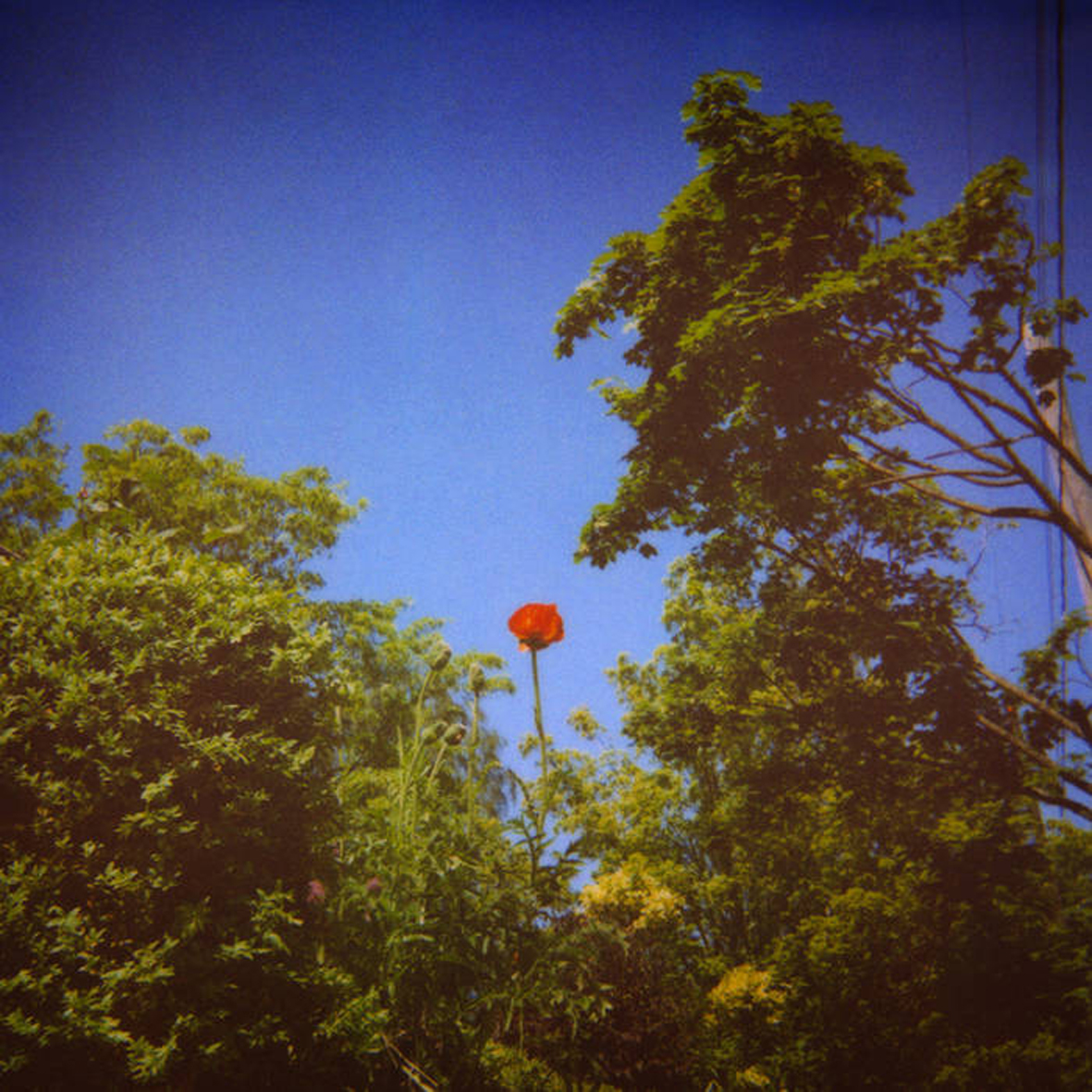 To my great shame, I slept on this excellent album for entirely too long, as Thomas Meluch’s mannered songwriting has never quite connected with me despite my appreciation for his hushed, bleary, and languorous aesthetic.  With Sonnet, however, he largely dispenses with vocals in favor of a suite of warm, lush ambient drone, which is (predictably) far more to my taste. That said, I would definitely hail this as a stellar album even without the benefit of my unfairly subjective stylistic predispositions, as it is an archetypal Great Kranky Album, consistently hitting the same woozy, blissed-out sweet spot as other label luminaries like Windy & Carl.  As if that were not enough, the end of the album shows hints of something even better (and far more distinctive).  This may very well be Benoit Pioulard's masterpiece.
To my great shame, I slept on this excellent album for entirely too long, as Thomas Meluch’s mannered songwriting has never quite connected with me despite my appreciation for his hushed, bleary, and languorous aesthetic.  With Sonnet, however, he largely dispenses with vocals in favor of a suite of warm, lush ambient drone, which is (predictably) far more to my taste. That said, I would definitely hail this as a stellar album even without the benefit of my unfairly subjective stylistic predispositions, as it is an archetypal Great Kranky Album, consistently hitting the same woozy, blissed-out sweet spot as other label luminaries like Windy & Carl.  As if that were not enough, the end of the album shows hints of something even better (and far more distinctive).  This may very well be Benoit Pioulard's masterpiece.
As far as album origin stories go, Sonnet is a fairly unusual case, as it is partially rooted in field recordings that Meluch made in 2013 of air conditioners, birds, insects, and washing machines.  Rather than just using the recordings themselves as background texture, Thomas attempted to recreate their timbres and harmonies on his guitar and chopped them into loops.  That is already an appealingly left-field move, but he then went one step further and also recreated the ambient sounds that he experienced in a series of dreams.  If Sonnet were not such a wonderful album, such a backstory would probably make me cringe, but it proves to be quite elucidating here.  These pieces are mesmerizing precisely because they do not follow any sort of expected or traditional compositional patterns, instead emulating non-musical sources and adhering to a hazy sort of dream logic.  In a more specific sense, that means that most of Sonnet’s 14 pieces drift along in a warmly rippling and hissing fever dream, achieving a blurred and veiled beauty without ever cohering into concrete structures or melodies.  To his credit, Thomas completely avoids all the inherent pitfalls of this vein by avoiding toothless oceanic bliss through a variety of sharp, distressed, and treble-heavy textures. Sonnet certainly feels like a dream, but it is an uneasy one experienced through blown-out speakers and a malfunctioning tape deck.
The overall effect is still quite a comforting (albeit disorienting) one and Meluch’s rare divergences only deepen the spell rather than break it.  For example, "A Shade of Celadon" is an actual song with vocals and lyrics, but it feels disconnected, slowed-down, and concealed beneath a thick veil of hiss.  Also, the whole thing completely dissipates into a disjointed clattering of cymbals after only a couple minutes.  The warbling "As Would the Weaver," on the other hand, resembles a pitch-shifted loop of a coyote fed through a chorus pedal.  The best pieces, however, simply take the album's normally bleary and cracked aesthetic and organically build it to poignant, dreamy crescendos.  In "Upon The Break Arch," Meluch combines an undulating bed of drone and a twinkling melody and gradually snowballs towards a bittersweetly pulsing and wounded-sounding catharsis.  "Shut-ins on Sundays See" is another highlight, as a glacially unfolding flow of chord swells increasingly gives way to a melancholy melody and host of echoing pops and clicks.  The true centerpiece of the album, however, is "The Very Edge of Its Flame," which can best be described as "like being inside a snowglobe on heroin": endless rippling and hissing warmth and an alternately ascending and descending music box melody that leaves a trail of heavenly afterimages.  It is an absolutely glorious piece (and thankfully a long one as well).
The most amazing quality of Sonnet, however, is how weirdly natural it all sounds.  The best pieces do not sound at all deliberate or composed–they feel like they just kind of happened, as if Meluch had just released field recordings of his dreams without any editing.  That is an incredibly hard illusion to pull off (or quite an astonishing technical feat if that is actually what he did).  The closest that I can come to a valid critique is this: most of the album is merely very good–it does not become truly great until somewhere around the tenth song.  That is probably just the result of intelligent sequencing though.  While it may have taken a while for Sonnet to completely grab my attention, it still did lure me in...and then it blossomed into an utterly sublime and achingly beautiful final act.  I would not have changed anything.  Sonnet is a surprise contender for one of my favorite albums of the year.
 
 
Read More
- Administrator
- Albums and Singles
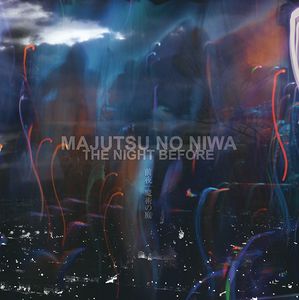 Majutsu No Niwa is not a band that strives to be understated. The last release that I heard was the two part Volume V, capturing the classic rock excess in both presentation and sound, but in the most tasteful of ways. Their newest album is not only a disc of new material, but accompanied by a full length DVD collection of performances captured in 2014. Both capture the band’s peerless approach to space and psychedelic rock, with more than a bit of abstract improvisation to keep things unexpected.
Majutsu No Niwa is not a band that strives to be understated. The last release that I heard was the two part Volume V, capturing the classic rock excess in both presentation and sound, but in the most tasteful of ways. Their newest album is not only a disc of new material, but accompanied by a full length DVD collection of performances captured in 2014. Both capture the band’s peerless approach to space and psychedelic rock, with more than a bit of abstract improvisation to keep things unexpected.
On the audio portion, the quintet embrace that big, bombastic rock sound, tinged with just the right amount of psychedelia, that characterized the strongest moments of their previous albums.A song such as the opening "Tokyo Zero Fighter" pairs the extremely taut rhythm section of Louis Inage and Shigeki Morohashi with the looser, occasionally unhinged guitars of Taiga Yamazaki, Wataru Kawai, and vocalist Rinji Fukuoka.The contrast of the tight rhythms with the noisy, raw guitar soloing is a brilliant one.
"Memories of Fire" also focuses on the rhythms, and even featuring the band work in a tiny bit of near country twang.The band takes their time during the song's almost 10 minute duration, with the guitar soloing slowly becoming looser and more disjointed as it moves along.Both "Monju" and "Melting Maitreya" has them at their most pop oriented.Less vintage sounding guitar solos and more emphasis on the drums and bass ends up defining two extremely catchy and memorable songs.Perhaps most telling moment is the cover of the Stooges' "Search and Destroy."It does not go in any unexpected odd directions and remains a faithful, appropriately overdriven and dense performance, and showcases one of their most obvious influences.
While some of their previous material has deviated from the big guitar sound into more folk tinged territories, the two biggest deviations on The Night Before are instead more dissonant, experimental, and brilliant.The first moment is the short, guitar drone heavy "Tropics, Ionized Jungle, Peeping Auroras".At roughly the midpoint of the album, it is a brief, but foreshadowing interlude of psychedelic guitar noise in drumless, vocalless space.
The album's closing title song is the most out there moment though.At almost 21 minutes, the band embraces their penchant for free improvisation.Structured guitar and bass is mixed with shards of guitar noise, slowly being built up into a complex array of sound.Hushed vocals and pounding drums are slowly blended in.I expected the piece to eventually come together into a tighter, conventional rock arrangement but it never does.Instead Majutsu No Niwa choose to keep things loose and dissonant to its conclusion.
The DVD is 67 minutes, culled from three performances and a total of seven songs.Drawing from all different eras of their discography, the visual and audio quality is impressive.As a whole package, The Night Before is exceptionally well executed.The audio material is consistently strong with their previous work, and I especially was happy to hear that the sound they embraced was the one I have always enjoyed from them, being loud, boisterous rock.Both the album and the accompanying DVD are energetic performances that capture the Majutsu No Niwa sound and style brilliantly.
samples:
 
Read More
- Administrator
- Albums and Singles
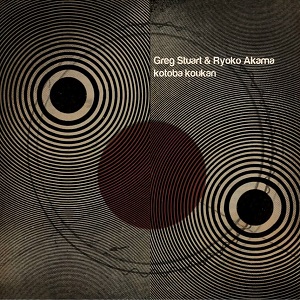 Although she composes scores meant for others to perform, there are times when Ryoko Akama seems intent on preventing performances of her work. Like when she asks, on Kotoba Koukan’s "con.de.structuring," for two or more collaborators to play three "soundless" sounds at fixed intervals without the help of a clock or a stopwatch, or when she inserts an observation about silent letters into "e.a.c.d." that suggests silence will be as essential to its realization as positive sound. Even with a talented interpreter like Greg Stuart around to meet such challenges, questions are bound to arise in the audience, who might wonder how a sound could ever be soundless or how a piece of music apparently devoted to silence could end up being so concrete and loud. Attentive listening may resolve some of these quandaries, but is as likely to generate new ones. Ambiguity and irresolution appear to be at the heart of the matter, at least in part, and besides, focusing on the conundrums in Akama’s work overlooks its power and impact. Ryoko and Greg’s music works on the body and mind in equal proportion, tempting interpretations and provoking reactions with confrontational sounds and understated twists.
Although she composes scores meant for others to perform, there are times when Ryoko Akama seems intent on preventing performances of her work. Like when she asks, on Kotoba Koukan’s "con.de.structuring," for two or more collaborators to play three "soundless" sounds at fixed intervals without the help of a clock or a stopwatch, or when she inserts an observation about silent letters into "e.a.c.d." that suggests silence will be as essential to its realization as positive sound. Even with a talented interpreter like Greg Stuart around to meet such challenges, questions are bound to arise in the audience, who might wonder how a sound could ever be soundless or how a piece of music apparently devoted to silence could end up being so concrete and loud. Attentive listening may resolve some of these quandaries, but is as likely to generate new ones. Ambiguity and irresolution appear to be at the heart of the matter, at least in part, and besides, focusing on the conundrums in Akama’s work overlooks its power and impact. Ryoko and Greg’s music works on the body and mind in equal proportion, tempting interpretations and provoking reactions with confrontational sounds and understated twists.
Matthew Revert’s artwork for Kotoba Koukan conveys almost perfectly the quality of the music inside. The simplicity of the design, the complexity of the patterns created by the concentric circles, and the evocation of sound’s physical properties all point to the album’s most potent and immediate attributes. Before the compositional strangeness of "e.a.c.d." can even be guessed, the hefty crunch of its textured electronics and cavernous tones is felt, which together produce the strong impression that Greg and Ryoko have captured the activities of physical objects operating independently in the world. The sound of the piano, the call of birds, and the persistent and rough friction of various surface noises all spotlight the material conditions necessary for that song’s existence, and so emphasize the presence of things, not just their reproduction.
The catch is that the score, which is not included in the liner notes, deals with far less defined entities. It contains such ambiguities as "long" and "like that" and "like a chimney," all arranged along a line that begins at a point marked 0’00" and that ends at 20’00". Situated in an area roughly halfway across that line is the phrase "silent letter is a letter that is not pronounced, yet without it the word makes no sense," with each instance of the titular letters emphasized, suggesting that there is an analogous entity at work in the music, present but silent or otherwise camouflaged.
Repeat listens present multiple candidates: a continuous fundamental tone that may or may not rise as the piece proceeds, the constant hum of electronic instruments, or maybe the various found sounds scattered throughout the piece, like little reminders of the objects behind the noises. The score itself could also be the music's silent ingredient, there but invisible behind Akama and Stuart’s performance choices. Whatever the answer might be in this particular interpretation, it could be different in a hundred others. The idea is not to crack the performance’s code, but to recognize how all the different parts relate, and perhaps to see or feel each sound as one element in a more complex and ultimately indefinable system.
With "con.de.structuring," Ryoko and Greg play with the enigmatic flow of time and call into question its atomistic measurement. The score quotes English writer, painter, and poet John Berger on the subject of visual art and time, and asks for all involved performers to select three "soundless" sounds to be played at precise intervals without the assistance of a timepiece. Invisible or immeasurable elements once again determine some aspect of the music’s performance, and again the musicians focus on sounds that outline spaces or suggest the presence of objects: radio fuzz, sonar pings, geological drones. It is as if, in the absence of ordinary time, Akama and Stuart intuitively sought out other means of measuring the extent of their environment. Instead of the usual relationship, sound becomes the standard for evaluating space and time.
Kotoba Koukan concludes with "border ballad" and "fade in and out procedure." The former sounds like an improvisation on the phenomena of friction and erosion utilizing wood, tape, glass beads, racquetballs, compressed air, sand, and slate. The latter is a matchlock explosion of colors and patterns achieved by the slow introduction and removal of five (presumably) electronic sounds chosen by Greg Stuart, for whom the piece was written. The simple mechanics of addition and subtraction are all he requires to cultivate the album’s most resounding, spacious, and finessed piece. The twittering of different high end signals, the pulse of the song’s throbbing low-end, and the ebb and flow of both form an impressive wall of sound capable of rattling the windows and shaking the floor. Buried beneath that impressive wave of turbulence are small artifacts that imply a physical process is working behind the scenes, like the bowing of a drum head or the vibration of a piece of metal. Whether their origins can be accurately deduced, and whether the meaning behind Akama’s instructions can be accurately interpreted, is ultimately unimportant. Alien or familiar, rational or ineffable, the sounds connect and leave an impression on environment and audience alike.
samples:
 
Read More
- Administrator
- Albums and Singles
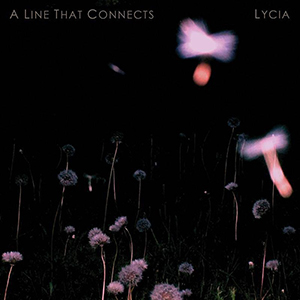 Lycia's reappearance after an eight year hiatus with 2013's Quiet Moments was a surprise for me, having heard very little about the legendary Projekt band for quite some time. That album was more than a mere blip, however, as it has been followed up with A Line That Connects, and the return of former band member David Galas. The result is a record that has a richer, more fully fleshed out sound than its predecessor.
Lycia's reappearance after an eight year hiatus with 2013's Quiet Moments was a surprise for me, having heard very little about the legendary Projekt band for quite some time. That album was more than a mere blip, however, as it has been followed up with A Line That Connects, and the return of former band member David Galas. The result is a record that has a richer, more fully fleshed out sound than its predecessor.
Quiet Moments featured Lycia as the core duo of Mike VanPortfleet and Tara Vanflower, with the latter only appearing on two of the 11 songs on the album.Because of that I felt the album had a more sparse, almost solo album quality to it, which is one of the ways this one is set apart from that work.A good parallel is how Swans' My Father was a great record, but The Seer felt like more of a complete, realized work.
The 14 songs of A Line That Connects almost seemed to be grouped into three distinct moods or themes that all connect beautifully to one another.The first third are the slower, more pensive and sad pieces.Right from the immediate opening of "The Fall Back" there is a slow, funeral pacing that slowly propels ghostly vocals and beautifully processed guitar and synthesizer melodies."Monday is Here" has an even more powerful sound with a Peter Hook-esque melodic bassline and Vanflower's vocals taking the focus in the chorus.The intimate mood and pacing work, but thankfully the trio decide to keep things fresh.
The mood shift happens distinctly about two thirds of the way through "An Awakening," from a somber to a heavier one.The first few minutes sounds like a recorded thunderstorm meshed with passages of guitar and synthesizer, eventually accented with drums and female vocals.The final minute, however, is dramatic and near-metal sounding heavy guitar riffs, bringing in a completely unexpected but welcome bit of intensity and force.
The following segment of the record has a more brisk pace but not necessarily a lighter mood."The Rain" is a stomping piece of near synth pop, with a fast tempo but dark and dramatic vocals, really emphasizing the gothic elements of the Lycia sound.Big, heavy guitars dominate "Bright Like Stars" and mixed with the brilliant distorted bassline and shifting male/female vocals, it is a memorable and dynamic piece.
The concluding songs of the album return to the dirgy pace of the beginning, but from a more experimental and diverse sound than the melody focused approach that opened the record.On "A Ghost Ascends" the trio lurches with a distinct darkness, using a chugging riff as their propellant, shifting between atmospheric and heavy ambience.Ides of Gemini vocalist Sera Timms makes an appearance on "Hiraeth", a piece that has the same chiming, slow melodic sound of the beginning of the record, but a more atmospheric, spacious sensibility to it.
At 14 songs and nearly 70 minutes, A Line That Connects is a heavy record.The shifting dynamics keep the album from getting into any ruts, but the bleakness and overall moody atmosphere at times can be a bit overwhelming.While Quiet Moments was a great record, this one has a more complete feel that harkens back to the band’s rich heritage, as well as the whole nexus of gothic-inspired subgenres that reigned strongly in the 1990s but too quickly disappeared.It is a distinctly contemporary album, but one that beautifully brings a healthy bit of nostalgia to make a beautiful, haunting record.
samples:
 
Read More
Celer, "How Could You Believe Me When I Said I Loved You When You Know I've Been A Liar All My Life"
- Administrator
- Albums and Singles
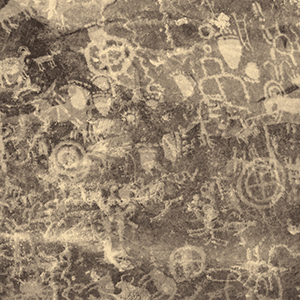 Will Thomas Long has made some changes to the Celer sound in recent releases, such as the subtle rhythmic structure of Voyeur, or the unending meditative repetition of Jima. How Could…, in that context, feels like a call back to the traditional sound he pioneered, laden with light wisps of sound, and pieces that evolve slowly but beautifully, never forcefully commanding attention yet never drifting off into the background.
Will Thomas Long has made some changes to the Celer sound in recent releases, such as the subtle rhythmic structure of Voyeur, or the unending meditative repetition of Jima. How Could…, in that context, feels like a call back to the traditional sound he pioneered, laden with light wisps of sound, and pieces that evolve slowly but beautifully, never forcefully commanding attention yet never drifting off into the background.
White Paddy Mountain/Two Acorns
Loops play a significant role on this album as well, but in less of a static context and more as a foundation that the pieces are built upon.The source material is rather basic:electric piano and flute, but what appears on How Could… is the result of decay.The instrumental loops were extracted from cassette tapes that had been exposed to the sun and warped vinyl test pressings, resulting in a sound that is as hot and arid as the Western US desert landscapes that inspired the album.
"Bleeds and Swell Blends" resembles the ghosts of digital chimes, drifting light and weightless through space.There is a delicate and gentle sensibility to the piece that is quite peaceful, yet has a haunting quality to it."These Dreams, How Portentously Gloomy" is a more than apt title for the following composition.Digital piano tones shine through a glistening passage of sound that would make perfect film score music, floating slowly and eventually taking on a more somber, introspective mood in its second half.
The source of "Natural Deflections" is less clear, because the sound resembles that of bowed strings, but what Long actually began with is not at all explicit.It has an even more buoyant quality to it, sparse but consisting of a strong collection of beautiful tonal drifts.The closing piece "Acrimonious, Like Fiddles" at first is built upon slightly more dissonant sounds, ones that sound clearly like they began as flute recordings.The loops are shorter so the pacing a bit more dynamic, but the mood is sadder compared to the other pieces.Towards its conclusion, the more dissonant elements are reeled in to emphasize the purer, clean tones.
How Could… is released on the three major formats, and not only was the mastering done to best present the sound on tape, CD and record, the cassette version features alternate versions of "Bleeds and Swell Blends" and "Acrimonious, Like Fiddles".The differences are subtle, but perceptible.The former seems to have a wider stereo spread, with a greater separation of channels."Acrimonious" has a thinner sonic spectrum to it, befitting the sound of a sun-damaged tape that sourced the piece.
Like much of Celer's work, How Could… has a distinctly sparse and introspective sound to it.Changes are slow, and are largely the result of loops that are tweaked and processed over time.The source of the base recordings here adds an extra bit of complexity, because that expansive, sun bleached sound shines through from those damaged tapes and records.
samples:
 
Read More

